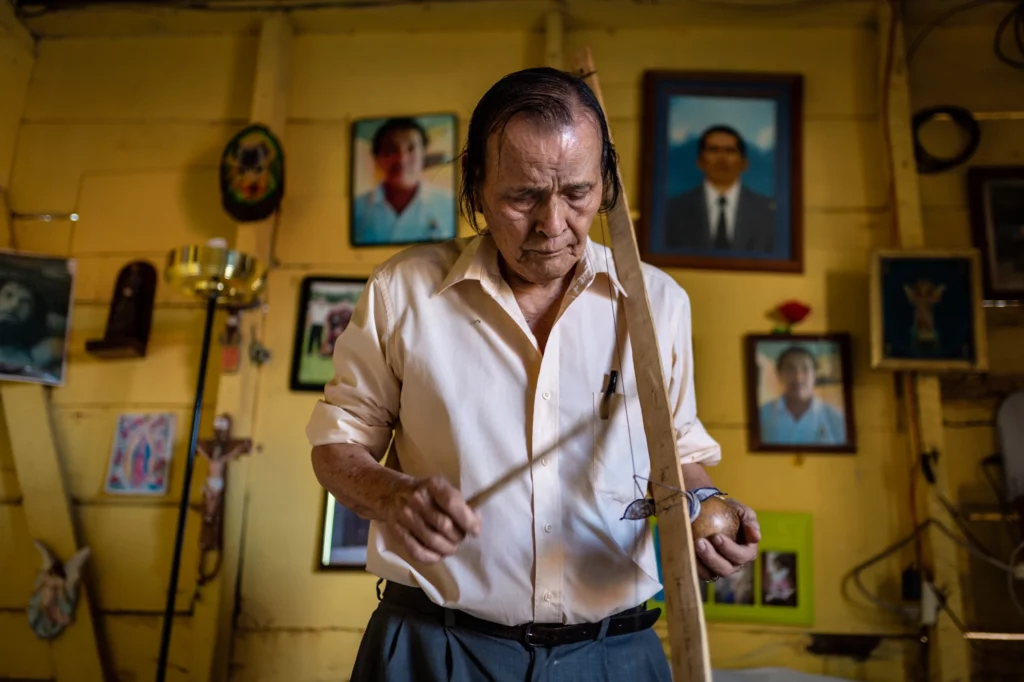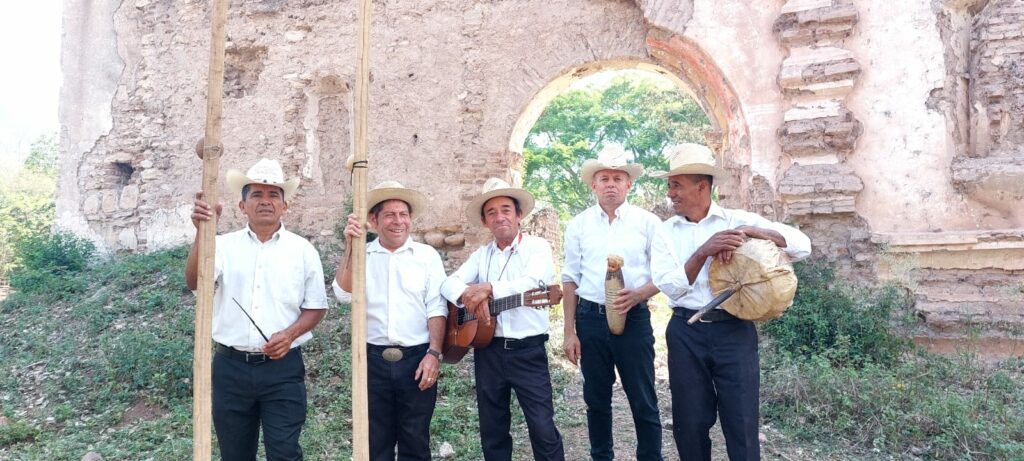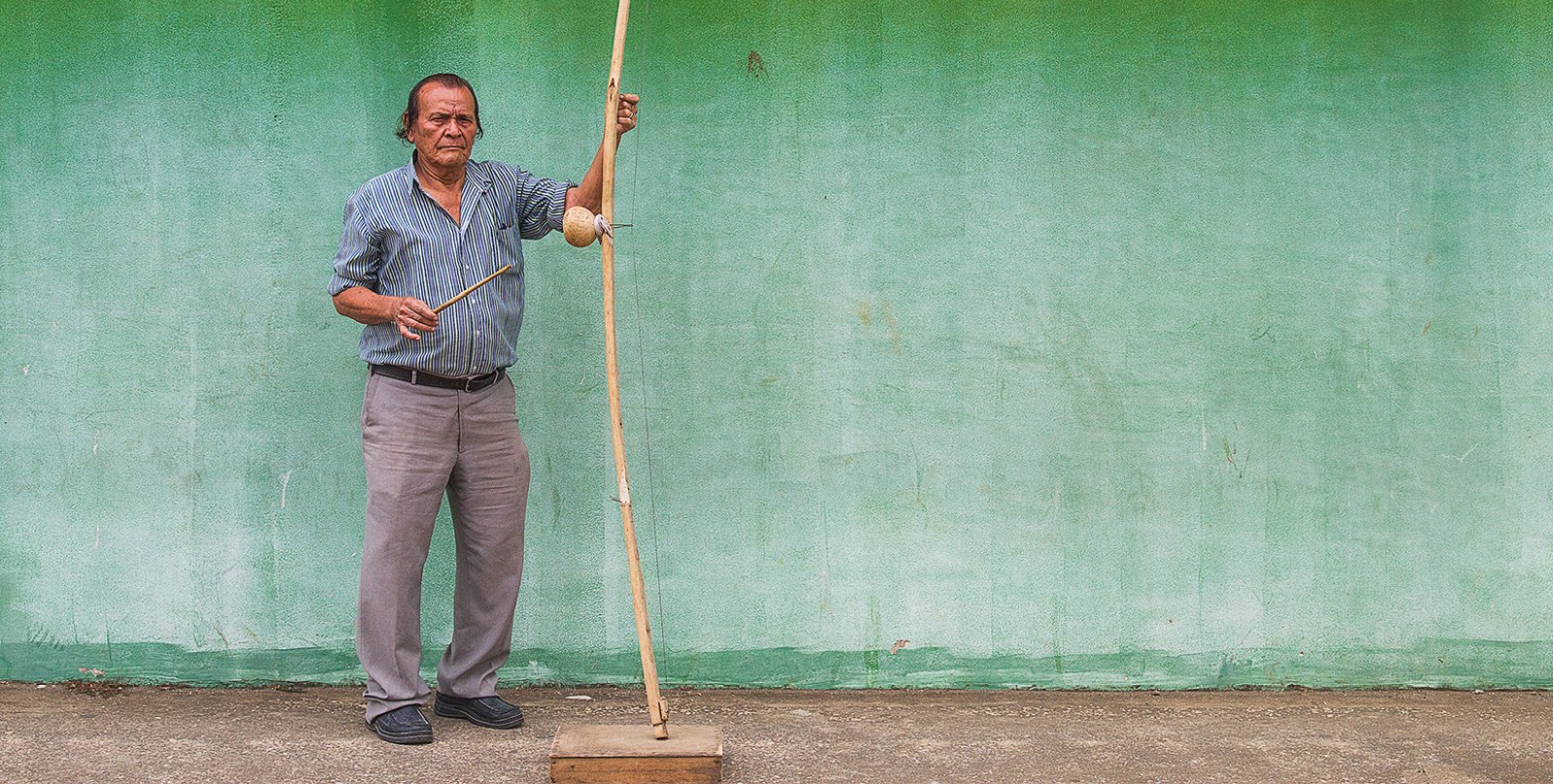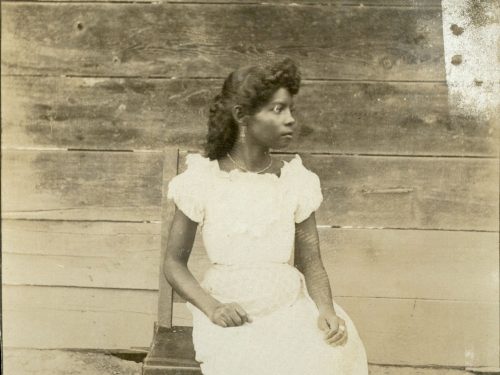
The house of Guanacastecan singer-songwriter and teacher Karol Cabalceta looks like an ethnographic-musical museum. There is a quijongo, a carraca, which is a dry equine jaw, and another great mysterious instrument: the sacabuche.
Originally from Honduras, it is a close relative of another very similar instrument that we had in Guanacaste and that disappeared many years ago. It was called a juque or juco.
Back in 1980, Jorge Luis Acevedo declared it extinct in his book “The Music of Guanacaste.” “It has completely disappeared from the entire province of Guanacaste,” he stated.
Why did it disappear? There are plenty of theories: the limitations of the instrument and the extinction of the gourd that it was made from are a couple of them. Karol took one of these explanations and put a plan into action to bring it back.
“The juque has been a complete mystery, something that was in the imagination. An unknown sound, a sound lost in time and something worth rescuing from our culture, from our tradition,” emphasizes Karol.
Reviving a Sound
Karol places the sacabuche in my hands and I get the impression that I’m holding the fossil of a large extinct animal. This and the juque are practically the same instrument, both belonging to the membranophone family. They have a resonance chamber made from a gourd, a membrane that covers it made from some animal skin, and a wooden stick covered in beeswax that is attached to the skin. By rubbing the stick, the skin vibrates and emits its sound.
The sacabuche is more alive than it seems. You have to “warm it up” for it to make its sound. So “cold,” my hand slides silently over the stick. I start to rub it so that the wax softens and the palm of my hand can generate friction. As I do this, Karol tells me more about the juque’s disappearance from the province.
Quijongo teacher Isidoro Guadamuz explained to her that before, there were very few people who preserved the seeds of the gourd necessary to make the juque and over the years, the plant and its fruit disappeared completely. And along with them, the people who had the knowledge to make it disappeared, too.
“With the quijongo, it’s an easier story, perhaps because we had living bearers [of the knowledge] and we had the chance to go and sit with them, but with the juque and, well, we don’t have bearers of the tradition,” she laments.

Isidoro Guadamuz is a quijongo teacher and won the National Prize for Traditional Popular Culture in 2014 along with Eulalio Guadamuz.Photo: César Arroyo Castro
After a couple of minutes trying to warm up the instrument, I rubbed my hand quickly across the stick and was able to get a soft “bellow” out of it.
The sacabuche has a deep and subtle sound, a characteristic that Gerardo Duarte, a musician and professor at the University of Costa Rica, believes may be why the instrument fell into disuse.
“The juque couldn’t compete with modern percussion instruments because they made more sound. Now you can make a juque and you can amplify it and it gives it more sound, but at that time, instruments were played acoustic,” he explains.
Another reason that Duarte mentions is that both the juque and the quijongo, despite being “very beautiful and exotic” instruments, are limited.
They have a very limited range of notes, but that shouldn’t be a reason for it to disappear,” he emphasizes.
Guanacastecan singer-songwriter Guadalupe Urbina adds one more reason: that the instrument has been marginalized due to its direct relationship with the descendants of slaves of African origin in the province.
How an Afro-Guanacastecan Instrument Came Into Being
The instruments from Guanacaste’s culture that adorn Karol’s living room have the same roots in a very distant place: Africa.
Daniel Matul, a writer and professor at National University, studies Afro-Guanacastecan subjects and explains that Spanish and Portuguese colonizers enslaved people from central Africa and brought them to the Americas.
They lived here under the subjugation of their enslavers and, according to Matul, starting in the 17th century, these slaves began to find areas in which they enjoyed greater freedom and they felt less risk of being punished for cooking their dishes or playing an instrument from their land. It was on the cattle ranches where they worked where they probably began to make these instruments, because there was less control from the foreman or from those who looked after the slaves.
“We’re not like moving a table; one just moves the table and that’s it. People move with all their cultural baggage, with their worldview, with their language, with their traditions, and one of those cultural expressions was the juque,” he affirmed.
This instrument’s presence is not limited to Costa Rica and neighboring countries. Variations exist in many Latin American countries: the cuica in Brazil, the furruco in Venezuela, and the marrana or zambumbia in Colombia.
Matul explains that that’s why, in order to determine the origin of this instrument, he has had to use studies that have been carried out in Brazil, Cuba or Spain.
“The musical history of African origin in Guanacaste has been little studied. What we’ve been doing is starting to pick up little pieces of a puzzle to build a story,” he explains.
Hope in a Seed
Looking at the whitish lines that trace paths through the deer hide, I ask Karol how this sacabuche came to Guanacaste.
She explains to me that to celebrate her 40th birthday, she traveled to Honduras during Holy Week (Easter Week) that year with the purpose of meeting caramba players (that country’s version of the quijongo) in order to share their knowledge. From previous conversations with these gentlemen via video calls, she already knew that they had an instrument similar to the juque.
My birthday present from the caramba players was a sacabuche and a handful of seeds. They told me: ‘Try your luck to see if they don’t take them away from you,’” she relates.
She distributed the seeds amongst all of her luggage to increase her chances that at least a few would pass immigration checks. And she succeeded.
“I’m clumsy at planting, but I’ve already given seeds to farmers here and they have already told me that there are some vines growing. I’m asking the universe for the seed to fruit set and for us to have fruits to start making juques again,” Karol comments hopefully.

Caramba players from Nuevo Celilac, Honduras, shared their techniques for making and playing the caramba, an instrument similar to the quijongo.Photo: Karol Cabalceta
Recultivating this giant gourd that I hold in my arms to obtain a practically extinct musical instrument strengthens that deep and distant root that connects our province with Africa.
Daniel Matul affirms that the first challenge that we have is to recognize not only our Spanish and Chorotega past, but also our large Afro-descendant heritage. And it seems to him that efforts like Karol’s prepare the ground for that recognition.
“Much of what I’ve learned and of the clues that I’ve been gathering hasn’t been because I went to an institution, but rather that people told me and that certain people in certain neighborhoods, in certain communities, are beginning to research their own history,” he highlights.







Comments